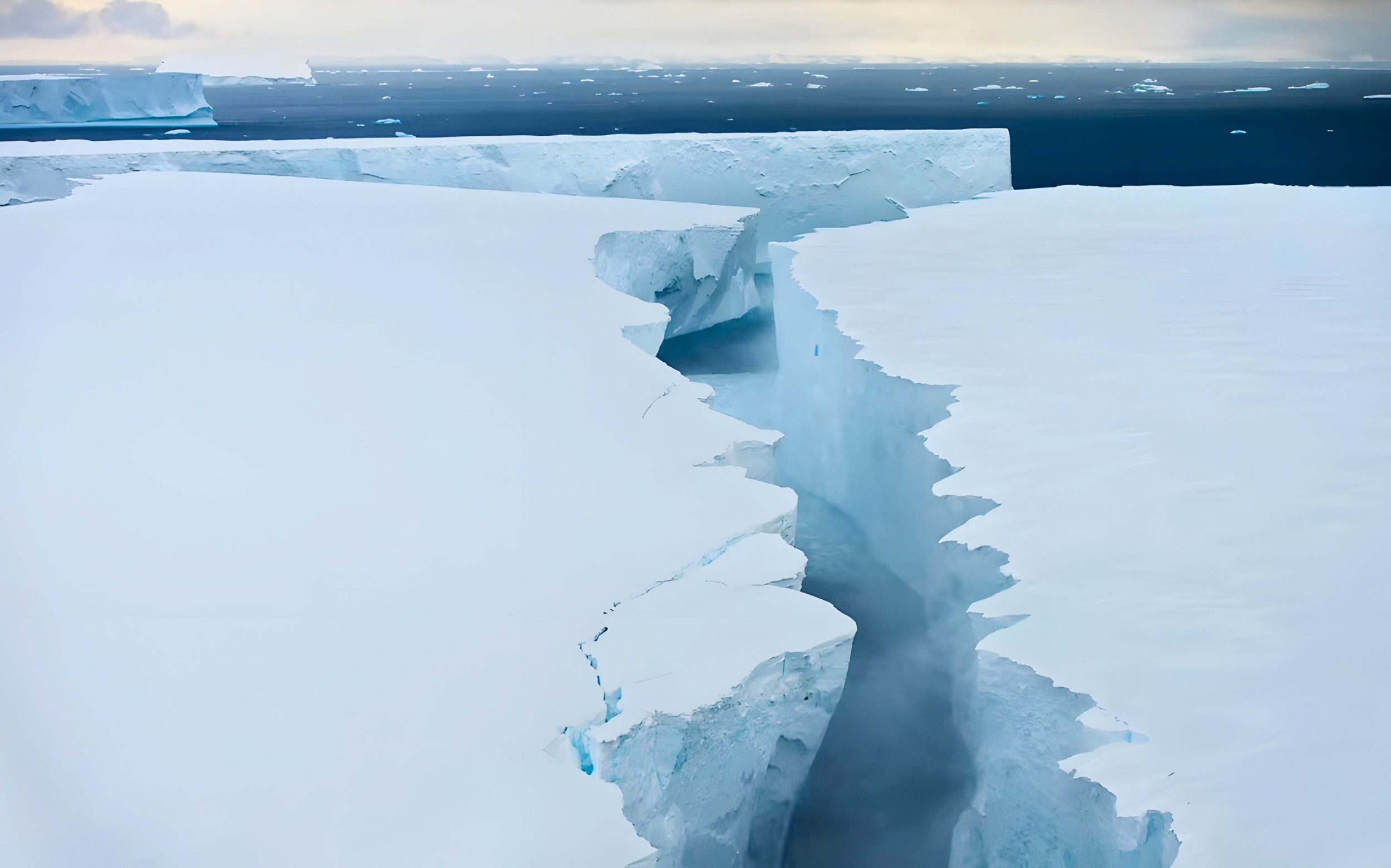The Thwaites Glacier in West Antarctica is nearly 80 miles wide, making it the largest glacier in the world by width. If it collapses entirely, the resulting changes could raise global sea levels. Scientists are racing to understand the forces at work before it’s too late.
To better understand how this could unfold, researchers developed a new way to study the cracks – or fractures – that weaken the massive ice shelves connected to glaciers.
These shelves float on the ocean, but they’re anchored to land. When they fracture and collapse, they speed up the melting of the glacier behind them.
Antarctic glacier nears its breaking point
Using years of NASA satellite data, the team focused on vertical fractures in the Antarctic ice sheet – the largest on the planet, even though it’s losing about 136 billion tons of ice each year.
Their attention was on the Thwaites Ice Shelf, a critical extension of the Thwaites Glacier in West Antarctica.
Often called the “Doomsday Glacier” for its potential to raise sea levels by up to 11 feet, Thwaites is especially vulnerable. The ice shelf acts like a stopper, slowing the glacier’s flow into the ocean. If that shelf collapses, it could trigger a chain reaction of rapid ice loss.
Rethinking how fractures form
The new method was developed by a research team at Penn State University. Their findings zero in on how fractures form and evolve in ice shelves – and why existing models aren’t enough.
Shujie Wang is an assistant professor of geography, a faculty associate in the Earth and Environmental Systems Institute at Penn State, and a co-author of the study.
“We know little about fractures, and their behavior is much more complex than conventional models suggest,” she said. “Conventional models depend largely on simplified models and scarce, hard-to-obtain field observations.”
The Thwaites Ice Shelf is particularly unstable. It changes quickly, its surface is heavily fractured, and the ice flows at a fast pace.
Researchers describe it as a final barrier that keeps the rest of the glacier from disintegrating.
Richard Alley, Evan Pugh University Professor of Geosciences at Penn State and co-author of the study, offered this analogy: “We’ve seen ice shelves break off, but we’ve never seen one grow back.”
“This new research indicates we can predict better the point at which these will break off. It’s helping to establish the early-warning signals.”
High-resolution views of ice breaking
To capture the changes in the ice shelf’s structure, the research team used data from NASA’s ICESat-2 satellite. It collected measurements between 2018 and 2024.
This satellite tracks ice elevation, sea level, and other Earth features with remarkable precision.
The team built a new two-step process to analyze the satellite data. It lets them create high-resolution elevation profiles and visual cross-sections of fractures in the ice.
Building on a previous algorithm Wang had designed to detect individual cracks, the new method gives researchers a better view of how different types of fractures form and evolve over time.
Antarctica’s glacier instability feeds on itself
The findings showed that the eastern section of the Thwaites Ice Shelf has more aggressive fracturing, while the western side appears more stable. The cause of that difference isn’t clear yet.
But the researchers pointed to several possible factors. These included warmer winter temperatures, less sea ice, and shifting ocean currents beneath the shelf. Further research is needed to know for sure.
As fractures spread, the ice flows faster. In Antarctica, that creates more cracks, which leads to more instability – a feedback loop that can push parts of the glacier past the point of no return.
“We believe that if the Thwaites Glacier gets very unstable, it will have catastrophic consequences,” Wang said. “It’s an important area to be studied, to say what’s going to change next.”
Lessons from a glacier lost
This latest work builds on a 2023 study led by Wang that looked at the Larsen B Ice Shelf, which collapsed in 2002.
That shelf, about 1,250 square miles in size, broke apart over just five weeks after years of weakening due to warmer air and ocean temperatures.
Back then, models didn’t catch the warning signs. Now, with this new method, researchers have better tools to predict when and where these breaks might happen.
While older approaches relied heavily on theory, the new system offers observations and data that can feed into more accurate models. Over time, the researchers hope this will lead to stronger predictions about how Antarctic ice is changing.
To support ongoing and future research, Zhengrui Huang, a doctoral candidate in geography and co-author of the paper, pulled together satellite data from more than 40 Antarctic ice shelves.
That dataset includes 3D information about fracture locations and depths – a potential goldmine for scientists working to understand ice dynamics.
“We expect this will be a key observational dataset of fractures for researchers who study and model Antarctic ice-shelf dynamics,” Huang said.
By sharing this data as an open resource, the team hopes to accelerate discoveries and sharpen predictions. The researchers also aim to help the world better understand what’s at stake if massive glaciers like Thwaites keep crumbling.
The full study was published in the journal Journal of Geophysical Research Earth Surface.
—–
Like what you read? Subscribe to our newsletter for engaging articles, exclusive content, and the latest updates.
Check us out on EarthSnap, a free app brought to you by Eric Ralls and Earth.com.
—–
